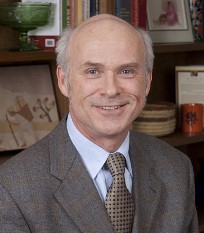- About Archives
- About SAA
- Careers
- Education
- Publications
- Advocacy
- Membership
 Employment Highlights: Director of Archives, The Archives of the Episcopal Church, 1992– ; Associate Curator, Harvard University Archives, 1987–1992; Associate Director, Harvard Depository, 1988–1992; Chief Archivist, City of Boston Archives, 1985–1987.
Employment Highlights: Director of Archives, The Archives of the Episcopal Church, 1992– ; Associate Curator, Harvard University Archives, 1987–1992; Associate Director, Harvard Depository, 1988–1992; Chief Archivist, City of Boston Archives, 1985–1987.
Education: Doctoral Studies, University of Texas at Austin; MA 1980, History and Archives, University of Massachusetts, Boston; BA, 1975 UMB.
Professional Highlights: Society of American Archivists: Council Member, 2004‒2007; Austin Program Committee Co-chair, 2009, Chair and Member, Archivists of Religious Collections Section (ARCS), 1997– . Academy of Certified Archivists: Certified Archivist, 1989– . International Council on Archives:Steering Committee Member, SKR, 1998–2009. Co-author, “Trust and Professional Agency in the Archives of Religious Organizations: An Archival Perspective on Confidence Keeping.”
* * *
Question posed by the Nominating Committee: What actions should the treasurer take to ensure that SAA remains fiscally strong and solvent while pursuing its strategic priorities and responding to opportunities and proposals that may exist outside of the strategic priorities?
Financial strength and solvency lie in the confidence and challenge we have in our core mission and principles, our strategic priorities, and the activities we choose to implement them. A five-year plan can set an ambitious agenda. It requires a close annual review and adjustment of how the budget reflects and operationalizes the organization's values and goals. As treasurer I would be interested in pursuing three approaches to the Strategic Plan to ensure long-term financial strength and innovation.
First, I would urge Council and staff leaders to intensify our fundraising effort by marketing the SAA Foundation and expanding our fundraising goals for research, development, and experimental practice. I believe that money raised by the SAA Foundation should seed the work of creative archivists who make valuable contributions to achieving our priorities. Thus far, we have been fairly successful in raising funds for scholarships and awards. It is time we build an endowment to encourage professional innovation in a way that is not strictly tied to a dues-driven budget.
Second, we should conduct a rigorous and regular analysis of the Strategic Plan’s priorities and tasks. The plan’s parts should be systematically evaluated for their continuing importance before assigning them to ourselves or to our staffing leadership. We should evaluate the strategic priorities in relation to real goals rather than tasks, and identify measures of progress and benchmarks of success.
Third, we should account for SAA’s financial resources by conducting a transparent analysis of our strategic goals (i.e., the plan’s “tasks”) in terms of their costs and their promised outcomes. I would urge Council to examine the plan’s tasks in light of emerging trends, long-range revenues, opportunities for sponsored research, and partnerships with professional allies. Consider that currently expenses identified in the plan for public advocacy are in excess of $95,000, compared to more than $59,000 for technology and $8,000 for diversity. This unevenness in financial commitment may be as simple as the difference between what is completely new and what can be absorbed in existing staff and overhead.
Imagine, however, if Diversity were identified as a core principle of SAA’s mission (rather than today’s priority) and that all the strategic priorities were required to reference diversity as an organizing principle. Consider then the effect of making continuing education one of SAA’s top priorities. That reordering of principles and priorities would render a completely different allocation and accounting of our resources—one that many of our members might welcome. This is the kind of inquiry about our long-term financial strength that I would recommend as treasurer.
I was on Council when the strategic priorities were first identified and I remember we struggled to articulate a plan that was both bold and achievable. Speaking for the profession, we want SAA’s strategic priorities to express the best of what we can achieve as a community of practice. The implementing activities should stretch us to create new ways of expressing the profession’s voice, have an element of manageable risk, and avoid elevating routine assignments that micromanage the work of staff and volunteers. We can choose to fund many ordinary tasks or a few amazing ones. Either way it will cost us about the same amount of money. As treasurer, I would advocate for the highly innovative but accountable uses of our existing and untapped resources.